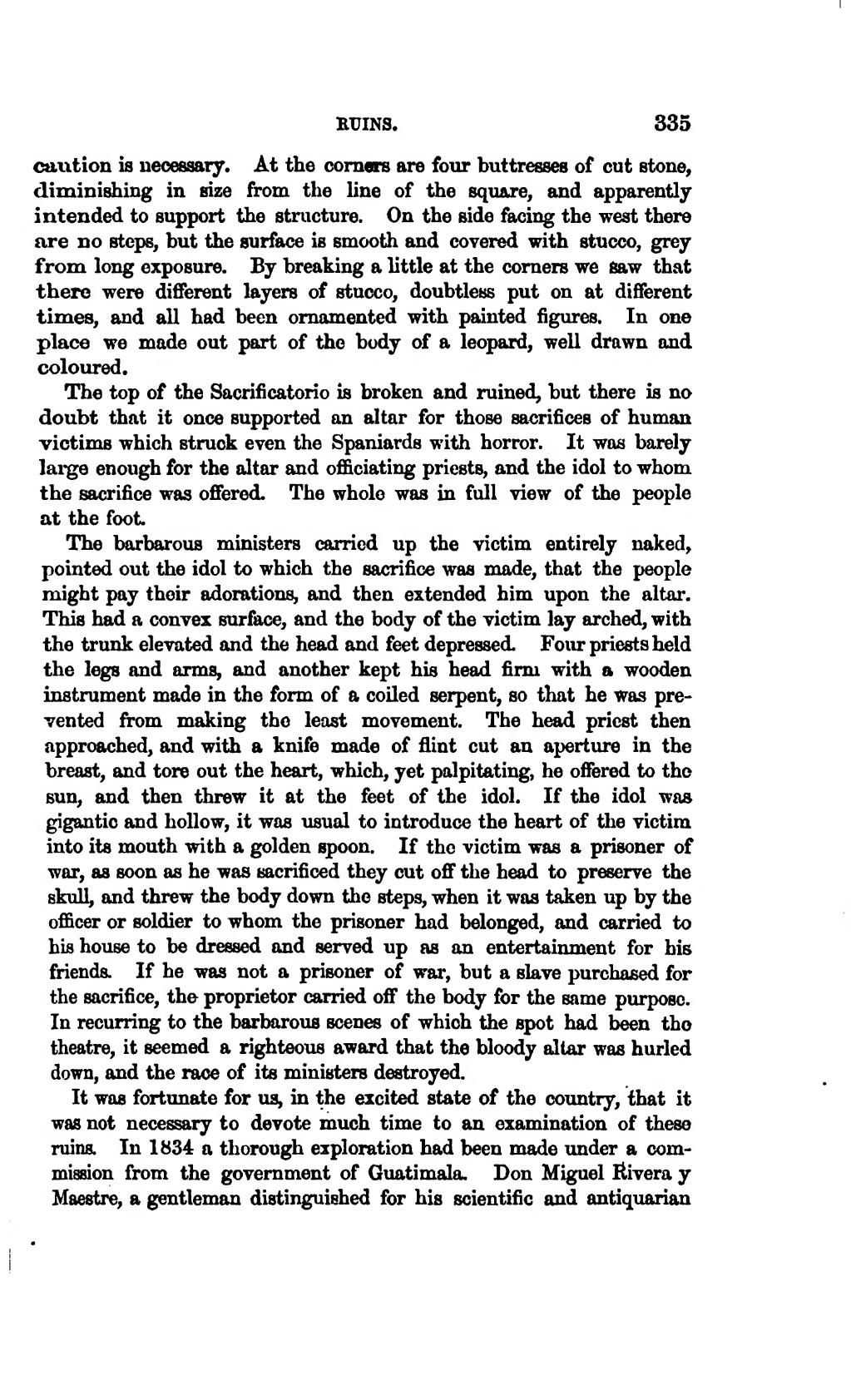caution is necessary. At the corners are four buttresses of cut stone, diminishing in size from the line of the square, and apparently intended to support the structure. On the side facing the west there are no steps, but the surface is smooth and covered with stucco, grey from long exposure. By breaking a little at the corners we saw that there were different layers of stucco, doubtless put on at different times, and all had been ornamented with painted figures. In one place we made out part of the body of a leopard, well drawn and coloured.
The top of the Sacrificatorio is broken and ruined, but there is no doubt that it once supported an altar for those sacrifices of human victims which struck even the Spaniards with horror. It was barely large enough for the altar and officiating priests, and the idol to whom the sacrifice was offered. The whole was in full view of the people at the foot.
The barbarous ministers carried up the victim entirely naked, pointed out the idol to which the sacrifice was made, that the people might pay their adorations, and then extended him upon the altar. This had a convex surface, and the body of the victim lay arched, with the trunk elevated and the head and feet depressed. Four priests held the legs and arms, and another kept his head firm with a wooden Instrument made in the form of a coiled serpent, so that he was prevented from making the least movement. The head priest then approached, and with a knife made of flint cut an aperture in the breast, and tore out the heart, which, yet palpitating, he offered to the sun, and then threw it at the feet of the idol. If the idol was gigantic and hollow, it was usual to introduce the heart of the victim into its mouth with a golden spoon. If the victim was a prisoner of war, as soon as he was sacrificed they cut off the head to preserve the skull, and threw the body down the steps, when it was taken up by the officer or soldier to whom the prisoner had belonged, and carried to his house to be dressed and served up as an entertainment for his friends. If he was not a prisoner of war, but a slave purchased for the sacrifice, the proprietor carried off the body for the same purpose. In recurring to the barbarous scenes of which the spot had been the theatre, it seemed a righteous award that the bloody altar was hurled down, and the race of its ministers destroyed.
It was fortunate for us, in the excited state of the country, that it was not necessary to devote much time to an examination of these ruins. In 1834 a thorough exploration had been made under a commission from the government of Guatimala. Don Miguel Rivera y Maestre, a gentleman distinguished for his scientific and antiquarian
